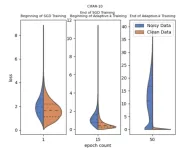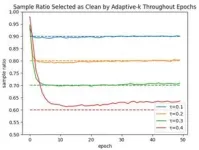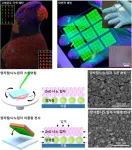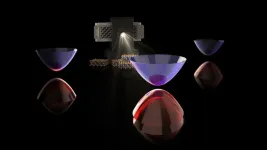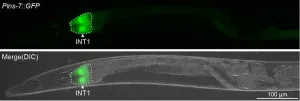(Press-News.org)
Training deep learning models on large datasets is essential for their success; however, these datasets often contain label noise, which can significantly decrease the classification performance on test datasets. To address this issue, a research team consisting of Enes Dedeoglu, H. Toprak Kesgin, and Prof. Dr. M. Fatih Amasyali from Yildiz Technical University developed a groundbreaking method called Adaptive-k, which improves the optimization process and yields better results in the presence of label noise. Their research was published on 15 August 2024 in Frontiers of Computer Science, co-published by Higher Education Press and Springer Nature.
The Adaptive-k method stands out by adaptively determining the number of samples selected for updating from the mini-batch, leading to a more effective separation of noisy samples and ultimately increasing the success of training in label noisy datasets. This innovative method is simple, effective, and does not require prior knowledge of the dataset's noise ratio, additional model training, or significant increases in training time. Adaptive-k has demonstrated its potential to revolutionize the way deep learning models are trained on noisy datasets by showing performance closest to the Oracle method, where noisy samples are entirely removed from the dataset.
In their research, the team compared the Adaptive-k method with other popular algorithms, such as Vanilla, MKL, Vanilla-MKL, and Trimloss, and assessed its performance in relation to the Oracle scenario, where all noisy samples are known and excluded. Experiments were conducted on three image datasets and four text datasets, proving that Adaptive-k consistently performs better in label noisy datasets. Furthermore, the Adaptive-k method is compatible with various optimizers, such as SGD, SGDM, and Adam.
The primary contributions of this research include:
• Introducing Adaptive-k, a novel algorithm for robust training of label noisy datasets, which is easy to implement and does not require additional model training or data augmentation.
• Theoretical analysis of Adaptive-k and comparison with the MKL algorithm and SGD. • High accuracy noise ratio estimation using Adaptive-k without prior knowledge of the dataset or hyperparameter adjustments.
• Empirical comparisons of Adaptive-k with Oracle, Vanilla, MKL, Vanilla-MKL, and Trimloss algorithms on multiple image and text datasets.
Future research will focus on refining the Adaptive-k method, exploring additional applications, and further enhancing its performance.
DOI: 10.1007/s11704-023-2430-4
END
□ A team led by Professor Ji-woong Yang of DGIST’s (President Kun-woo Lee) Department of Energy Science and Engineering, in collaboration with Professor Moon-kee Choi of UNIST's Department of New Materials and Dr. Taeg-hwan Hyun of the IBS Nanoparticle Research Center, has developed a double-layer dry transfer printing technology that simultaneously transfers light-emitting and electron-transferring layers onto a substrate. This technology is expected to provide a more life-like view in augmented reality (AR) and virtual reality (VR), greatly enhancing the immersive experience.
□ ...
Shawna Hollen, associate professor of physics, has been named to The Gordon and Betty Moore Foundation’s 2024 cohort of Experimental Physics Investigators. The prestigious honor, which is accompanied by $1.25 million in funding over the next five years, will advance understanding of the link between charge density waves and quantum dots, two physical phenomena that could lead to improvements in quantum computing.
“The ideas that I put forward [in my proposal] haven’t been demonstrated. It’s not something that anyone else ...
In 2011, UNESCO issued The UNESCO Recommendation on the Historic Urban Landscape (“The Recommendation” hereafter), introducing the concept of “historic urban landscape” (HUL). HUL is defined as “the urban context and its geographical setting taking into consideration the historical layering of cultural and natural values and attributes”. It is noteworthy that ancient towns or historic cities, as an important subclass of HUL, have garnered increasing attention. In recent years, public perception and emotional experience of physical environments have become ...
Metasurfaces are two-dimensional counterparts of metamaterials, which are the artificial materials that possess unusual characteristics. With a variety of fascinatingly innovative and diverse uses, these specially-prepared surfaces with engineered patterns can modify the propagation of electromagnetic waves across the entire spectrum of wavelengths. Though the journey of metamaterials began with metal-dielectric systems, the metasurfaces have gone all-dielectric, and are crucial in applications relating to optoelectronic devices such as solar cells and light emitting diodes (LED) to improve their efficiency through a mere surface effect.
Student researchers led ...
This year, New Zealand became among the first countries in the world to force their largest companies and financial institutions (about 200 in all) to disclose their climate-related risks and opportunities in their annual reports, and make regulatory filings.
Over the last month, these reports have been filed under the disclosure regime led by the Financial Markets Authority.
But do these kinds of initiatives improve environmental outcomes?
A new study, co-authored by Professor Charl de Villiers (University of Auckland, Business ...
Solution-processed semiconductor nanocrystals are also called colloidal quantum dots (QDs). While the concept of size-dependent quantum effects had been long known to physicists, a sculpture of the theory into real nanodimensional objects remained impossible till the discovery of QDs. The size-dependent colors of QDs are essentially naked-eye, ambient-condition visualization of the quantum size effect. In recent years, researchers across the world have been searching for fascinating quantum effects or phenomena using the material platform of QDs, such as single-photon emission and quantum coherence manipulation.
Floquet states (i.e., ...
Antarctica’s unique ecosystems could be threatened by the arrival of non-native marine species and marine pollution from Southern Hemisphere landmasses, new oceanographic modelling shows.
In a study published today in Global Change Biology, scientists from UNSW Sydney, ANU, University of Otago and the University of South Florida suggest that floating objects can reach Antarctic waters from more sources than previously thought.
“An increasing abundance of plastics and other human made debris in the oceans means there are potentially more opportunities ...
A recent study has explored the legal and ethical challenges expected to arise in human brain organoid research.
Human brain organoids are three-dimensional neural tissues derived from stem cells that can mimic some aspects of the human brain. Their use holds incredible promise for medical advancements, but this also raises complex ethical and legal questions that need careful consideration.
Seeking to examine the various legal challenges that might arise in the context of human brain organoid research and its applications, the team of researchers, which included a legal scholar, identified and ...
University of Queensland researchers have discovered a mechanism in DNA that regulates how disease-causing mutations are inherited.
Dr Anne Hahn and Associate Professor Steven Zuryn from UQ’s Queensland Brain Institute said the findings could provide a promising therapeutic avenue to stop the onset of heritable and age-related diseases.
“Mitochondrial DNA is essential for cell function,” Dr Hahn said.
“But as we age it mutates, contributing to diseases ...
LA JOLLA, CA—In a struggle that probably sounds familiar to dieters everywhere, the less a Caenorhabditis elegans (C. elegans) worm eats, the more slowly it loses fat. Now, scientists at Scripps Research have discovered why: a small molecule produced by the worms’ intestines during fasting travels to the brain to block a fat-burning signal during this time.
Although the exact molecule they identified in the worms has not yet been studied in humans, the new work helps scientists better ...
